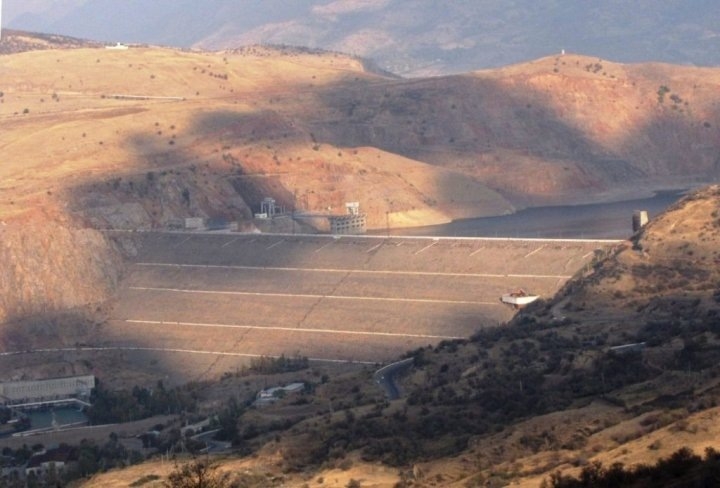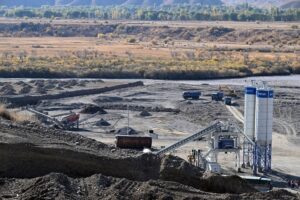The Charvak reservoir, located in the Tashkent region of Uzbekistan, is not just a large artificial reservoir. It plays an important role in the life of the region, providing water, electricity and support to agriculture. But what happens if a dam holding 2 cubic kilometers of water suddenly fails? What consequences await cities located downstream of the Chirchik River, such as Chirchik and Tashkent? Let’s look at what might happen, which areas will be at risk and what research says about it. We were prompted to think about this by a video circulating on the Internet.

The Charvak reservoir is located in the Bostanlyk region, approximately 60-80 kilometers from Tashkent. It is located at an altitude of about 1620 meters above sea level. The dam that forms the reservoir is 168 meters high and holds about 2 billion cubic meters of water. This makes Charvak one of the largest reservoirs in Uzbekistan. The Chirchik River, which begins at the reservoir, passes through several settlements, including Khojikent, Gazalkent, Chirchik and Tashkent. If the dam collapses, a huge volume of water will rush down the river, posing a threat to everyone living in these places.
The city of Chirchik, where about 163 thousand people live, is located at an altitude of approximately 582 meters above sea level. It is located closer to the reservoir — about 28 kilometers from the dam. Tashkent, the capital of Uzbekistan with a population of more than 3 million, lies lower, at an altitude of 450-480 meters, and is approximately 60 kilometers away from Charvak. The elevation difference between the reservoir and these cities means that the water will move quickly and with great force in the event of a breakthrough. This poses a serious threat to both cities, but Tashkent, as a larger and more populous center, could be hit harder by the scale of its infrastructure and population.
If the dam of the Charvak reservoir completely collapses, 2 cubic kilometers of water will flow downstream of the Chirchik River. This will create a powerful wave that can flood everything in its path. Research shows that such flooding can lead to significant destruction. Residential buildings, roads, bridges, hospitals, schools and industrial facilities will be at risk. In Chirchik, where large factories are located, including chemical plants, flooding can damage equipment and cause the leakage of hazardous substances. In Tashkent, where important government agencies, banks and other key facilities are concentrated, the consequences could be even greater.
To understand how serious the situation can be, it is worth remembering the breakthrough of the Sardobin Reservoir dam in 2020. Then a reservoir with a volume of less than 1 cubic kilometer caused a flood, due to which about 100 thousand people were evacuated. Thousands of homes were destroyed, agricultural land was damaged and several people died. The Charvak reservoir is twice as large, and its destruction could lead to more severe consequences. Entire areas may be flooded in Chirchik and Tashkent, and infrastructure restoration will take years.
The Charvak Reservoir dam is constructed of earth materials. Research shows that such structures are vulnerable to natural factors. In Uzbekistan, where earthquakes occur, seismic activity can damage the dam. In addition, over time, cracks may appear in earthen dams, especially if their condition is not checked regularly.
There is little exact data on plans in the event of the destruction of the Charvak dam in open sources. However, it is obvious that to protect Chirchik and Tashkent, it is necessary to regularly check the condition of the dam, monitor possible cracks and monitor seismic activity. Evacuation plans and public warning systems play an important role. Smaller reservoirs, such as Khojikent and Gazalkent, downstream, could theoretically slow the flow of water, but their volume is too small to stop flooding from 2 cubic kilometers.
For residents of Chirchik and Tashkent, the destruction of the dam can lead to the loss of housing, property and even a threat to life. In Tashkent, as in the capital, there are key facilities — hospitals, schools, government buildings — and their damage can paralyze the city. The economic impact will be significant: flooding will disrupt water and electricity supplies and affect agriculture dependent on irrigation. Environmental problems, such as pollution of land and water bodies, can also arise from flooding.
To assess the scale of a possible disaster, we can recall examples from other countries. In 1963, in Italy, at the Vaiont dam, a landslide caused a wave that killed about 2,000 people. In 1976, the Teton Dam burst in the United States, the volume of which was less than the Charvak Reservoir, but this led to the death of 11 people and significant destruction. Given Charvak’s proximity to major cities, the consequences in Uzbekistan could be even more devastating.
Studies conducted in Uzbekistan and abroad highlight the importance of regular monitoring of dams. Earthen dams such as the Charvak dam require special attention due to their vulnerability to seismic impacts and erosion. Some experts note that early warning systems and evacuation plans in the region are underdeveloped.
Murad Teshabayev («UPL.UZ»)




